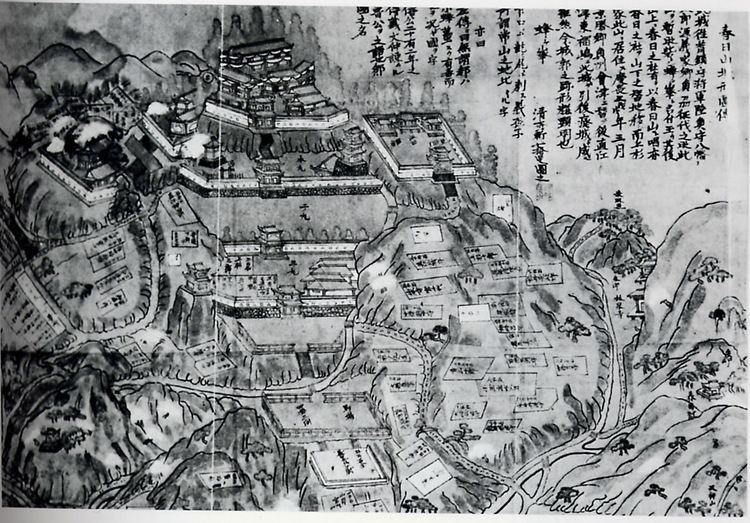Phone +81 25-545-9269 | In use until 1607 | |
 | ||
Condition Ruins; only earthwork walls and dry moat remain Address Japan, 〒943-0819 Niigata Prefecture, Joetsu, 中屋敷他 Similar Kasugayama Station, Kasugayama Shrine, Rinsenji, Takada Castle, Naoetsu Station | ||
Kasugayama Castle (春日山城, Kasugayama-jō) was the primary fortress of the Japanese warlord Uesugi Kenshin during the Sengoku period. It is situated in what is now the city of Jōetsu, Niigata prefecture, and was originally built and ruled by the Nagao clan. It is listed on Japan's Top 100 Castles list due to its significance in culture, history and region.
Contents
History
There was an older castle on this site that dates to the 14th century, but there's no certain information about it. The Kasugayama castle was probably built by Nagao Tamekage, and then was inherited by Nagao Harukage. Uesugi Kenshin, his younger brother who was originally named Nagao Kagetora, became the lord of the castle in 1548. This castle was Uesugi Kenshin's departure point in his engagement with Takeda Shingen in the 1561 Battle of Kawanakajima.
After his death in 1578, his adopted son Uesugi Kagekatsu gained control of it, after a brief series of battles with another son Uesugi Kagetora, over the inheritance. Twenty years later, as Kagekatsu moved to Aizu, the Hori clan became the lords of Kasugayama; but they also decided it was not a good place to rule from, so they built a new castle at Fukushima and, in 1607, Kasugayama Castle became deserted.
The castle is unofficially called Hachigamine Castle, the name Kasuga (literally "spring day") coming from a connection to Kasuga-taisha, a major Shinto shrine shrine in Nara. The castle and its history were mentioned by Takizawa Bakin, and Yamazaki Yoshishige in Tanki manroku.
Characteristics
The castle was built on the mountain (yamajiro means "mountain castle") due to defense advantage, with many trenches and outer bailey, North-West of Kubiki plain, and situated at a spot essential to defending the roads of Hokuriku region.
The kuruwa (walls of the castle) and the honmaru (core of the castle and living quarter of the ruler), are 20-minute walk from the side of Kasugayama Shrine (founded in 1901). The ruin of honmaru is located at 180 m.a.s.l., with view at the Joetsu City, Kubiki Plain, and the Sea of Japan. There many fort ruins around 2-6 km, which were used as a defense network of the castle. The castle was never attacked.
Not many structures are preserved beside the castle grounds. There two museums nearby at the Rinsenji Temple, and the Eastern Fortress area.
Significance
Kasugayama Castle is regarded as among Japan's Five Greatest Mountain Castles, along with Nanao Castle, Odani Castle, Kannonji Castle and Gassantoda Castle.
